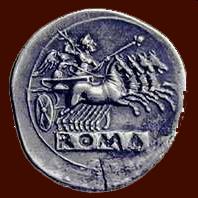




Looking After Your Finds - Identification - Finds

Roman (examples) Mosiac
Powered By Sispro1

Floor Mosiacs
3.
Reference Roman Helmets
Copyright All Rights Reserved by Nigel G Wilcox E-Mail: ngwilcox100@gmail.com
Designed by Nigel G Wilcox
Complimentary Topics
The Paragon Of Metal Detecting
& Archaeology
& Archaeology
Pages
Main Coin Menu
Roman Coins
Menu
Menu
Member NCMD
Roman Menu
Discovered Mosaics Around the UK
Rare Roman Mosaic in Farmer's Field is UK's 'Most Important' Find in 100 Years
A farmer's field in Rutland has uncovered a rare Roman mosaic and villa thought to be the most significant find of its kind in the last century.
©Ancient Art Architecture Collection
Jim Irvine first stumbled upon the "unusual pottery" amid the pandemic lockdown in 2020.
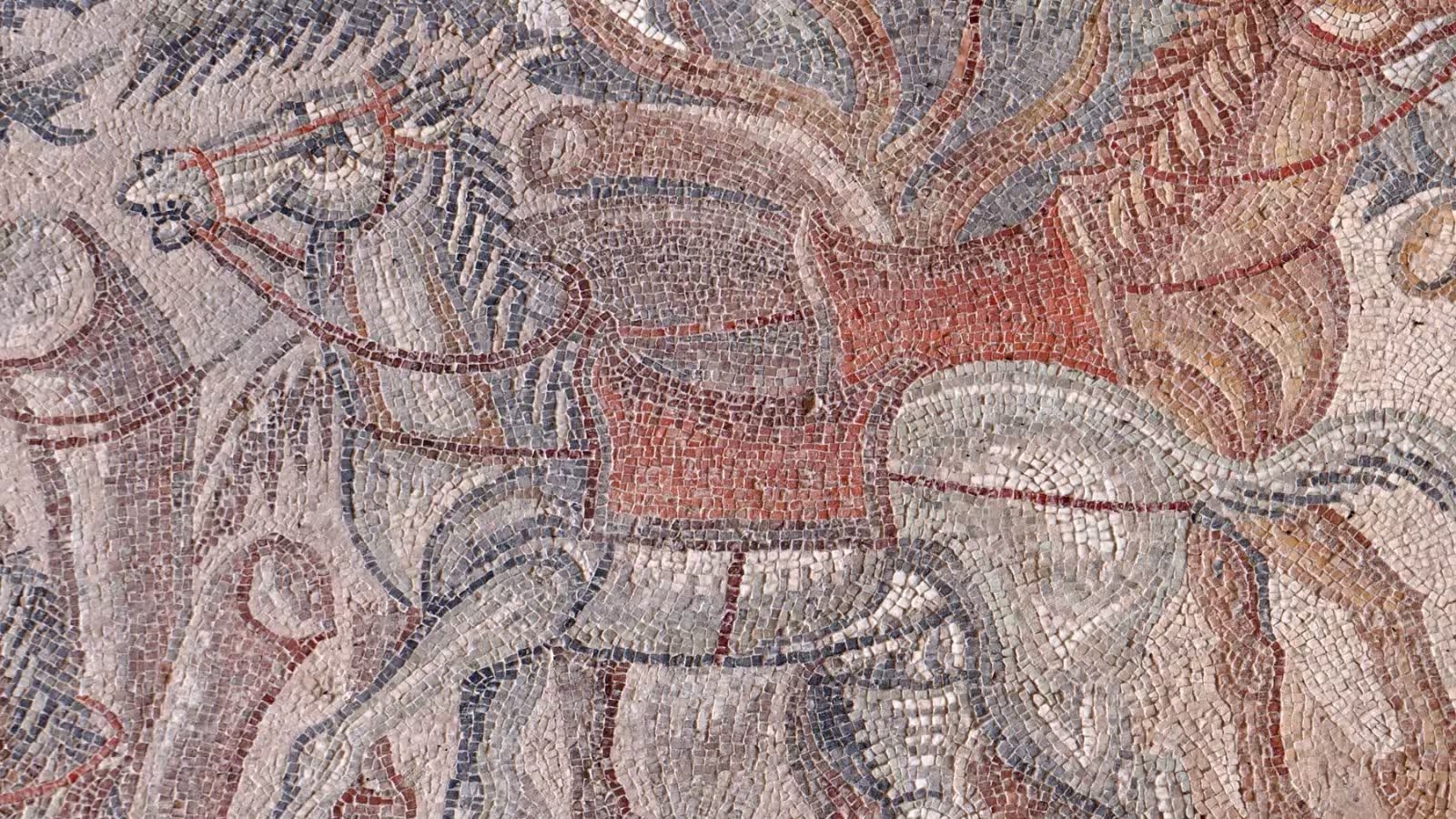
A rare Roman mosaic, the first of its kind, and a villa complex have been discovered from a farmer’s field in the UK. The mosaic illustrates scenes from Homer’s ‘The Iliad’ and the Greek hero Achilles. It was found beneath ploughed fields in Rutland. The site is now protected as a Scheduled Monument by the Department for Digital, Culture, Media and Sport (DCMS) on the advice of Historic England. It is believed that the villa could have belonged to a rich individual from the Roman age. According to a BBC report, Jim Irvine, son of landowner Brian Naylor, first stumbled upon the “unusual pottery" pattern amid the pandemic lockdown in 2020. He got in touch with the archaeological team of Leicestershire County Council. Historic England sanctioned an urgent funding for investigation by the University of Leicester archaeologists. “My family have been farming this land for 50 or 60 years. To see something that has been undisturbed for 1700 years or so has been amazing," BBC quoted Irvine in a statement.
Historic England termed the discovery as one of the most remarkable and significant " ever in Britain. The mosaic is thought to have been the floor of a dining or entertaining space of the complex. There were also barns, circular structures and a probable bath house found around the villa. Mythological mosaics used to be a regular feature in Roman Empire buildings, but this particular discovery is considered as unique because it depicts Achilles and the battle with Hector towards the end of the Trojan War. The villa could probably have been owned by a person with an interest of knowledge in classical literature between the 3rd and 4th Century AD and the money to execute incorporating the finer details. As of now, only a small portion of the huge site has been excavated, with more digging planned for 2022. Courtesy News18 26.11.21
Historic England termed the discovery as one of the most remarkable and significant " ever in Britain. The mosaic is thought to have been the floor of a dining or entertaining space of the complex. There were also barns, circular structures and a probable bath house found around the villa. Mythological mosaics used to be a regular feature in Roman Empire buildings, but this particular discovery is considered as unique because it depicts Achilles and the battle with Hector towards the end of the Trojan War. The villa could probably have been owned by a person with an interest of knowledge in classical literature between the 3rd and 4th Century AD and the money to execute incorporating the finer details. As of now, only a small portion of the huge site has been excavated, with more digging planned for 2022. Courtesy News18 26.11.21
The "Old Masters" mosaics of Roman Britain
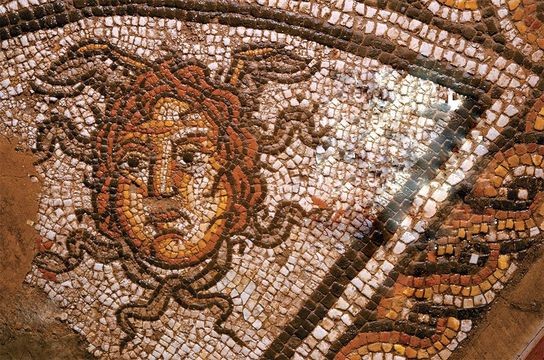
The majority of Britain's mosaic masterpieces have been lost to the ages, but those that remain are absolutely stunning.
When Pablo Picasso commented that art is not truth but rather a lie that makes us realize the truth, one assumes he wasn t musing about the artistic glories of late Roman Britain. Research during the past decade or so suggests, however, that he could have been. The last century of Roman rule saw an artistic flourish that, in intellectual terms, has arguably never been excelled.
Using visual metaphors, allegories and rich allusions, the artists of 4th-century Roman Britain portrayed what they saw as ultimate truth through the beauty and vigour of symbolic fiction. Picasso would have loved it.
When Pablo Picasso commented that art is not truth but rather a lie that makes us realize the truth, one assumes he wasn t musing about the artistic glories of late Roman Britain. Research during the past decade or so suggests, however, that he could have been. The last century of Roman rule saw an artistic flourish that, in intellectual terms, has arguably never been excelled.
Using visual metaphors, allegories and rich allusions, the artists of 4th-century Roman Britain portrayed what they saw as ultimate truth through the beauty and vigour of symbolic fiction. Picasso would have loved it.
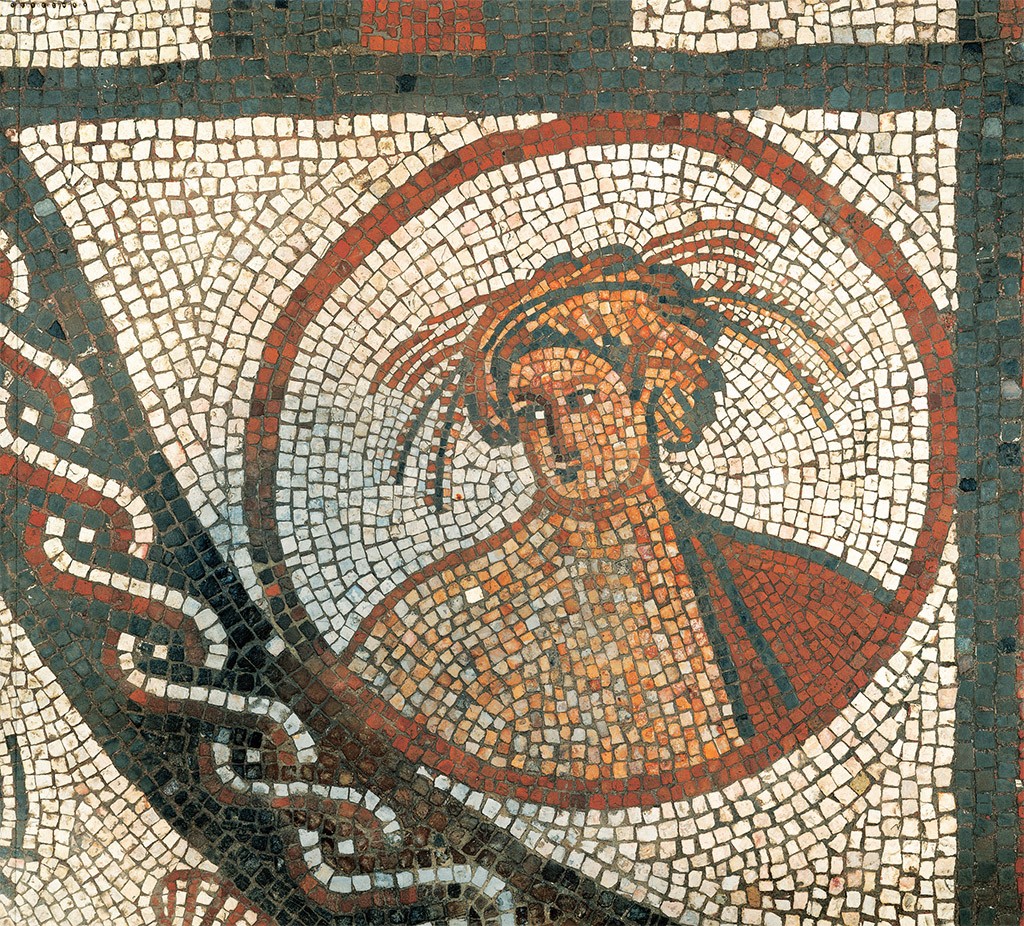
Another detail of the Lullingstone floor mosaic depicts the mythical figure of Summer wearing a garland of corn. ENGLISH HERITAGE
Like Europe in the first half of the 20th century, Britain 1,600 years earlier had been a place of massive intellectual and as in Picasso’s work in the 20th century—4th-century Romano-British art powerfully reflected that state of flux. While the artistic debate was mainly political in the 20th century, Roman Britain was engaged in an unparalleled variety of religious and philosophical debates in the 4th century. Those debates were reflected above all in the achievements of the mosaic artists who beautified the floors of rich and plush Romano-British country houses in what is now England.

The 4th-century mosaic floors were the greatest artistic achievement of Roman Britain. Tragically, of the 2,000 or so Roman mosaics known to have existed, only 150 survive in a relatively complete and only half of those are from the 4th century, the period of highest creative output.
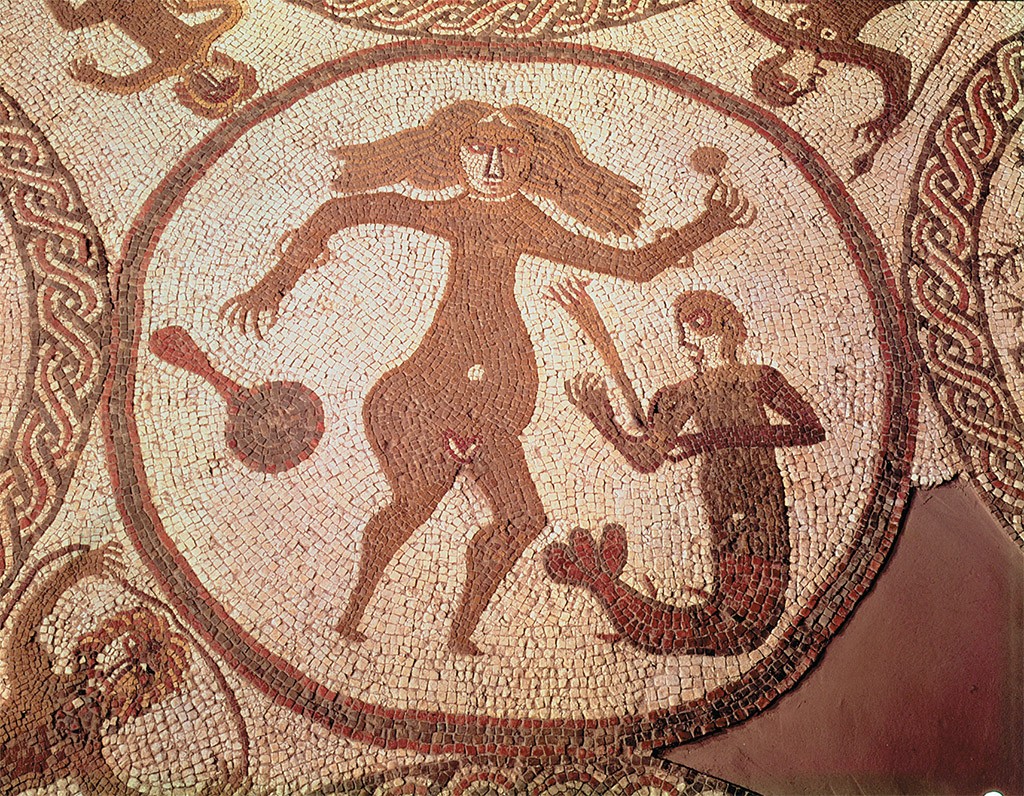
This circular mosaic from Hinton St. Mary, Dorset, depicts a figure of Christ in front of the universally recognized Chi Rho symbol. A detail of a nimbused Tyche or Fortuna, the goddess of fortune, discovered at Brantingham, East Yorkshire. An oval panel mosaic shows a merman paying homage to the goddess Venus, found in East Yorkshire and now on display in the Hull and East Riding Museum. Venus, the Roman goddess of love and beauty, is also the subject of another mosaic, discovered at Bignor Roman villa, on the Sussex coast.
The majority of Britain s mosaic masterpieces have been either lost or destroyed, most of them in recent centuries. It is as if 90 percent of Rembrandts or Picassos had been largely or totally obliterated. However, the mosaics that remain are, in terms of their illustration of philosophical thought and symbolism, absolutely stunning.
The educated elite of 4th-century Britain lived in lavish country villas and commissioned artists to create elaborate mosaics that visually mirrored the shifting beliefs of the times. Britain s late Roman mosaic masterpieces are therefore awash with allusions to both pagan mythology and Christian ideology. In addition, there were some cases where pagan mythology was even used to bring stories from the Old and New Testaments to life. In several mosaic works (from Hinton St. Mary, Dorset; and at Lullingstone, Kent), for example, spectacularly beautiful portrayals of Bellerophon (a half-human, half-divine son of a god) killing the Chimera (a fire breathing, multiheaded monster) are used to symbolize God s destruction of evil.
The majority of Britain s mosaic masterpieces have been either lost or destroyed, most of them in recent centuries. It is as if 90 percent of Rembrandts or Picassos had been largely or totally obliterated. However, the mosaics that remain are, in terms of their illustration of philosophical thought and symbolism, absolutely stunning.
The educated elite of 4th-century Britain lived in lavish country villas and commissioned artists to create elaborate mosaics that visually mirrored the shifting beliefs of the times. Britain s late Roman mosaic masterpieces are therefore awash with allusions to both pagan mythology and Christian ideology. In addition, there were some cases where pagan mythology was even used to bring stories from the Old and New Testaments to life. In several mosaic works (from Hinton St. Mary, Dorset; and at Lullingstone, Kent), for example, spectacularly beautiful portrayals of Bellerophon (a half-human, half-divine son of a god) killing the Chimera (a fire breathing, multiheaded monster) are used to symbolize God s destruction of evil.
©Sheridan/Ancient Art Architecture Collection
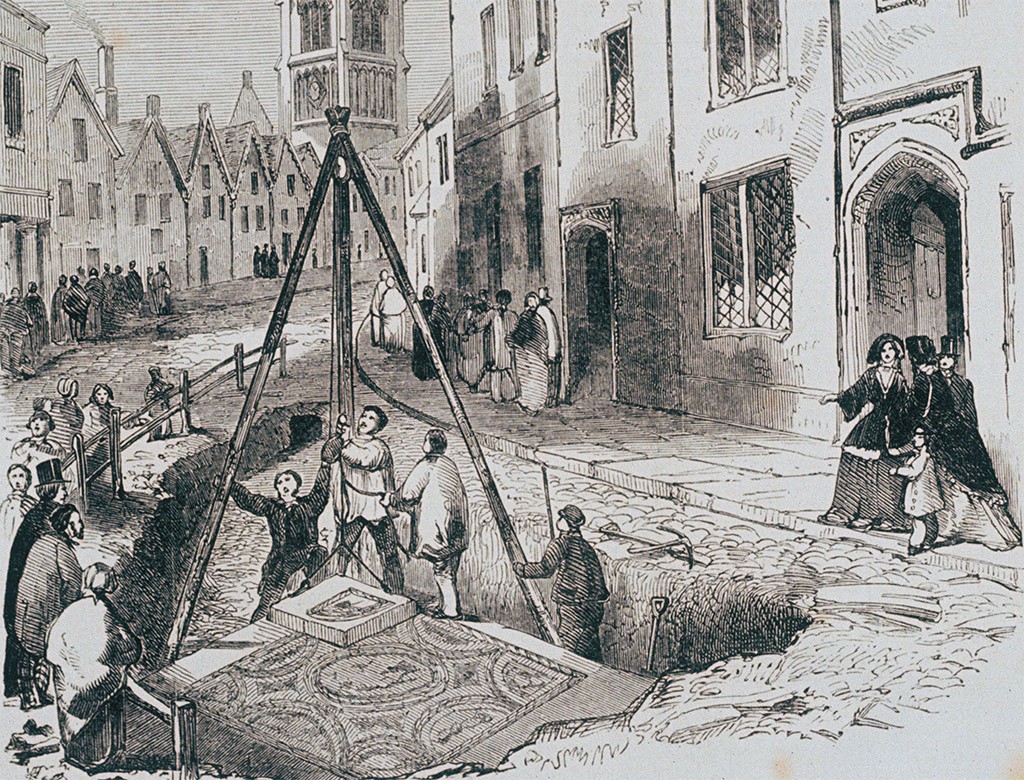
An engraving shows workmen uncovering a tessellated Roman pavement beneath Cirencesler’s streets circa 1849. Mosaic pavements such as this one can be seen al the town’s Corinium Museum. CORBIS
Continued....
Courtesy: British Heritage- Travel - David Keys | @BHTravel_ Nov 29, 2024






















